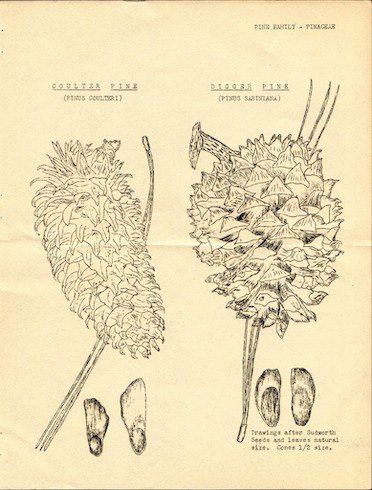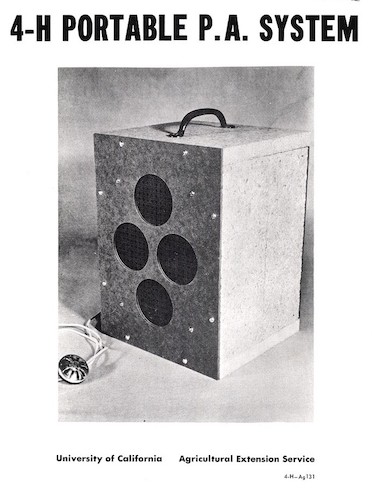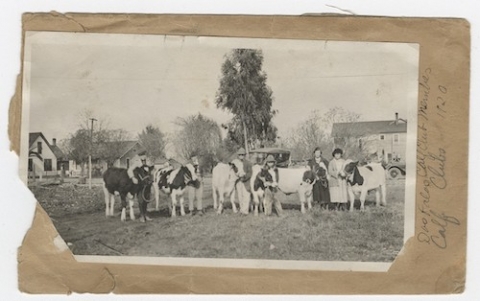As farm advisors fanned out across California in the 1910s and 1920s and developed programs of work with local farm bureaus, one of their key endeavors was enrolling boys and girls in local agricultural clubs. Early agricultural clubs, including calf, pig, poultry, vegetable growing, and home economics clubs, were formed to provide youth with hands-on learning experiences and demonstrate better agricultural and home practices. Merced County agent J.F. Grass attested in his 1920 report that these clubs successfully “aroused the interest of parents” and “stimulated farm bureau work in those communities.” Competitions were established to increase attention to purebred stock, better feed, and other farm improvement objectives.
Images above: Dos Palos Calf Club Members, 1920, Merced County. First and second prize lamb exhibited by Edward Questo of the Harmony Grove Club, 1936, San Joaquin County. Stanislaus County Demonstration Day winners Joan Dompe and Rita De Lash (photo dated 1950s).
Participating in demonstrations, competitions, and judging allowed members to polish what are called “soft skills” today: skills such as communication, teamwork, project management, and leadership. Growth in membership led to the recruitment of adult volunteers who served as project leaders, and clubs adopted formalized procedures and organizational structures under the national 4-H system. The breadth of publications and other 4-H materials from California archived in the California Agricultural Resources Archive shows how projects expanded beyond agriculture and home economics. We’ve picked a few highlights found in the recently published Madera County UC Cooperative Extension records.
Illustrations of California Trees (1930) prepared for California 4-H leaders is a guide to identifying native conifers that indicates their distribution across the state:

Following these 1966 instructions, a 4-H club could construct a Portable P.A. System for $18-20 dollars and “amplify a speaker’s voice with clarity and enough volume to cover audiences of 200 or more:”

Humboldt County 4-H All-Star Mark Bent compiled this 1973 project manual, Rocket into the Future:

In 1959, the University of California produced a 28-minute motion picture film, The 4-H Trail, as an introduction to the 4-H Club program in California. The film features lively footage of club activities and events from around the state and singing by 4-H chorus members. The CARA project has digitized this film for preservation and access. It can now be viewed in full online in Calisphere.





